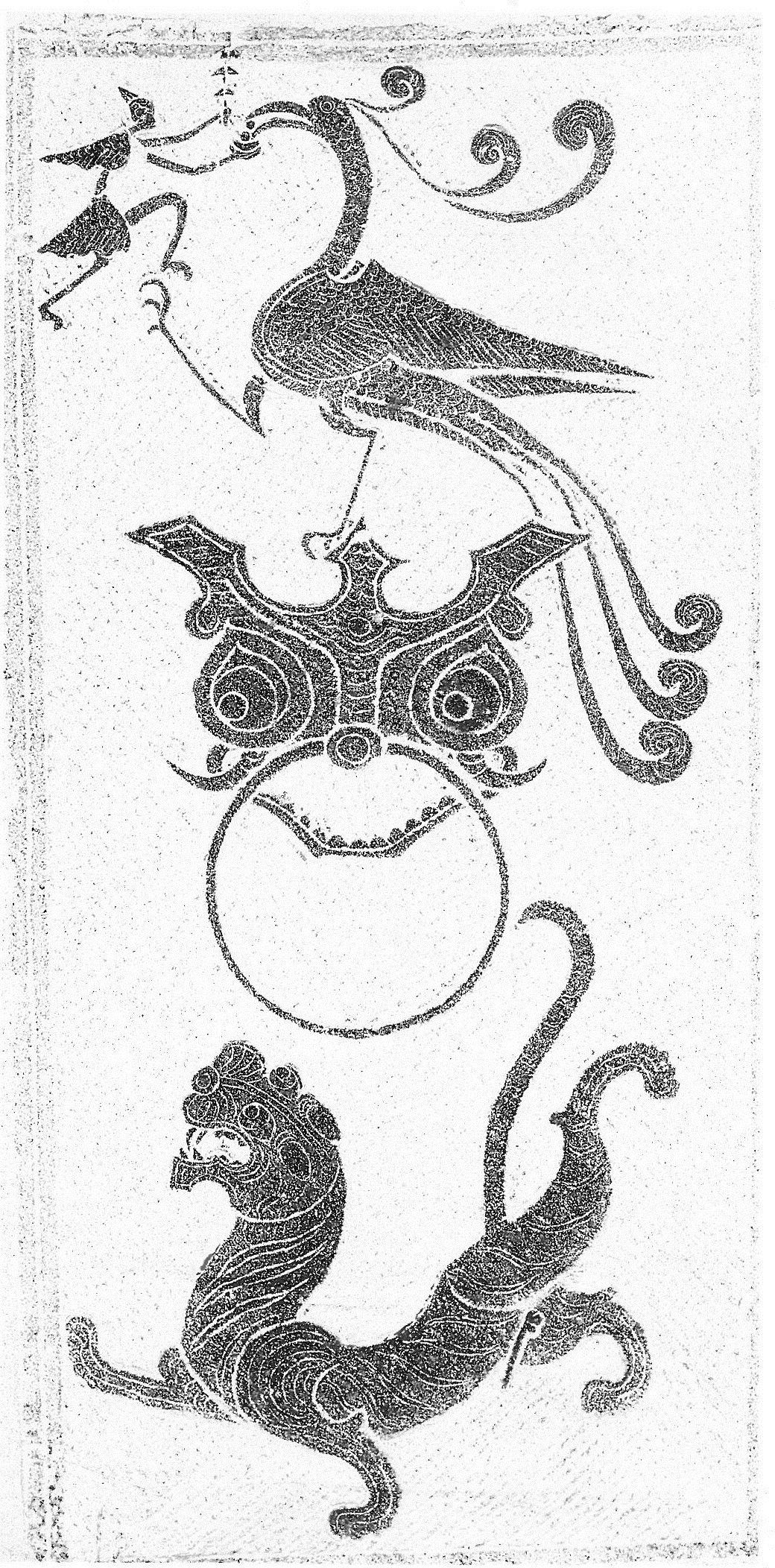The fenghuang 鳳凰, also written 鳳皇, mostly translated as "phoenix", was a fabulous beast in ancient Chinese mythology. The phoenix was an auspicious bird that appeared alone or in flocks in times when peace and prosperity are the result of a benevolent government.
There were different kinds of phoenixes, all of which had five different colours. These were the huang 凰 or huangniao 皇鳥 (or 凰鳥), luan 鸞 or luanniao 鸞鳥 and feng 鳳 or fengniao 鳳鳥. A phoenix looked like a pheasant (ji 雞 "hen"). The pattern of its head was interpreted as the character de 德 "virtue", that of the wings as yi 義 "righteousness", that of the back as li 禮 "proper behaviour", that of the shoulders as ren 仁 "kindheartedness", and the pattern on the belly as xin 信 "trustworthiness".
 |
Rubbing of a relief stone from the Han period, showing a door knocker in the shape of a fierce animal (pushouxian 鋪首銜) between a red phoenix and a white tiger (baihu 白虎). In front of the phoenix, a winged person (yuren 羽人) can be seen who holds a magic mushroom (lingzhi 靈芝) and a plate (filled with a cinnabar pill?) in his hands. 94 × 175 cm. Excavated in Dongguan 東關 in Fangcheng 方城, Henan, and kept in the Nanyang Painting Museum of the Han Dynasty (Nanyang Hanhua Guan 南陽漢畫館). Source: Zhongguo meishu quanji bianji weiyuanhui 《中國美術全集》編輯委員會, ed. (1993). Zhongguo meishu quanji 中國美術全集, Huihua bian 繪畫編, Vol. 18, Huaxiangshi huaxiangzhuan 畫像石畫像磚 (Shanghai: Shanghai renmin meishu chubanshe), no. 167. |
The Classic Shangshu 尚書 "Book of Documents" says that when the pipe music of the syle shao 韶 was played, the phoenixes appeared to pay reverence. The Tang period 唐 (618-907)scholar Kong Yingda 孔穎達 (574-648) explained that the male was called feng, while the female bird was called huang. Feng is also a short term for phoenix.
Another name for phoenix or generally a kind of auspicious bird was yan 鶠, which is explained as a homonym to yan 偃 "to raise", because the phoenix (representing the female or the empress) used to ride with the wind, while the dragon (represending the male or the emperor) rode with the clouds. 鶠 is also a variant of yan 燕 "swallow", the xuanniao 玄鳥 "black bird". The swallow or phoenix was the totem bird of the Shang dynasty 商 (17th-11th cent. BC) because it impregnated the ancestress of the dynasty.
With the colour vermillion (zhu 朱), the phoenix symbolizes the direction south, heat and summer. In this representation it is called zhuque 朱雀 "vermillion sparrow".
Other auspicious animals are turtle (gui 龜) and unicorn (qilin 麒麟) and dragon (long 龍).